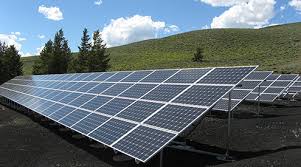The push for clean energy is more akin to a sprint than a marathon, yet it often feels like wading through syrup. Let’s dissect why venturing into renewables isn’t just “good” but crucial, and how embracing this can be less of a headache and more of an exhilarating leap into a sustainable future.

First up, let’s talk solar. Ever stared at your calculator during a boring math class and marveled at how it still functioned under the flickering classroom lights? That’s solar power in miniature form, my friends. Expanding this technology on a grand scale, solar panels can capture the sun’s generosity to power everything from small homes to entire cities. Plus, have you seen those sleek black panels? They’re not just functional; they make any rooftop look like it’s dressed for a tech-savvy gala.
Then there’s wind power, the unsung hero of renewables. Wind turbines, those lofty giants standing tall in fields or off coastlines, whirl about converting breezes into energy. Let’s pause for a quick reality check, though; these turbines don’t just operate on a “whenever” basis. Imagine them as diligent, albeit gigantic, worker bees that harness air currents to sustain our energy appetites.
Isn’t it peculiar how water — something as simple as what comes out of your kitchen tap — can also turn into a powerhouse? Hydropower uses running water to generate electricity through a series of mind-boggling mechanisms involving turbines and generators. Hydroelectric plants are often nestled in scenic areas, where the water’s natural flow doesn’t just beautify the landscape but also works hard behind the scenes.
Now, if you’re eagerly scratching your head wondering about the lesser-known soldiers of the clean energy brigade, cast your eyes on geothermal energy. Buried beneath Earth’s crust are layers of heat that can be harnessed to warm up our homes or generate electricity. It’s literally earth-shattering once you delve deep into how this all works, like tapping into Earth’s inner fire without the mythical dragons.
Speaking of heat, let’s swivel our attention to biomass energy. This type involves using organic materials — think plants and manure — which feels a bit old-school yet undeniably crafty. These materials combust to release stored energy, albeit smelling less like a campfire and more like sustainable progress.
But wait, here comes another intriguing player: tidal energy. The ocean’s tides are predictable; they’re the drama-free relatives in the family of water bodies. Their rise and fall can power turbines, which in turn churn out electricity, proving that the sea’s rhythmic motions do more than just soothe your soul during a beach vacation.
Now, integrating these energy sources isn’t without its challenges. Picture trying to assemble a jigsaw puzzle with pieces from different boxes; it requires patience, a bit of elbow grease, and a dash of creativity. Grid integration makes sure that the electricity generated from these disparate sources doesn’t end up like uninvited guests at a party — awkwardly standing alone but, rather, mingling smoothly.
The economic incentives are nothing to scoff at either. Investing in clean energy can spur job creation, foster innovation, and even thrust forward local economies into the spotlight. Cue the bustling industry markets and technological advances that not only brighten the employment outlook but also introduce a competitive streak in the global marketplace.
Keep in mind, switching gears to clean energy isn’t about donning rose-colored glasses; it’s an outright necessity dictated by climate change’s looming shadow. It’s a bit like updating your wardrobe: out with the old, pollutant-emitting raggedy outfits, and in with the swanky, eco-friendly threads that promise longevity and style.